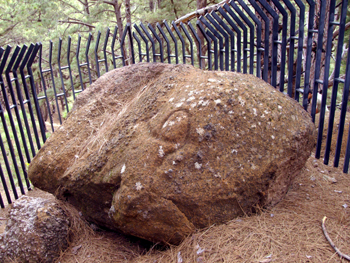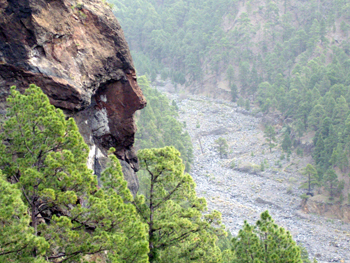On Top of the World

Looking east towards Tenerife.
The highest point of the island is the Roque de Los Muchachos, at 2,426m (8,000 ft) above sea level. Most days of the year, the view is spectacular. Even when it's raining at sea-level, the summit is nearly always above the clouds. In fact, you can often look down on a sea of clouds surrounding the island. Of course that's one reason why the observatory is up here.
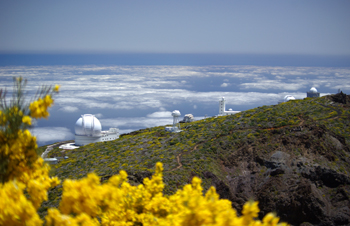
North towards the observatory. Telescopes left to right: Herschel, Dutch Open, Mercator, Swedish Solar Tower, Newton and Kapteyn.
You also get a wonderful view into the Caldera de Taburiente. I believe the patch of bright green at the bottom here are fields near the water-manager's house, some 1,600 m (5,280 ft) below.
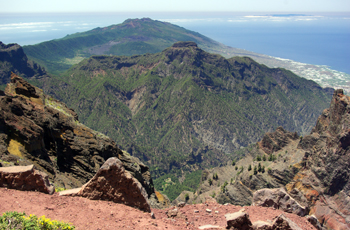
South, along the central ridge.
The Roque is just inside the Caldera de Taburiente National Park, and part of the municipality of Garafía. When I came to La Palma, seventeen years ago, the place was as nature made it. But now that there's a road, they got enough visitors here to cause a serious problem with erosion. Now they've built paths out of local stone, and they've done a really good job of making it look natural, except for the occasional fence. It's best to keep tot he paths. If you slip on the lose gravel it's a long way down.
Roque de Los Muchachos means Rock of the Boys. The name comes from the stone pinnacles at the summit, which look vaguely like giant people.
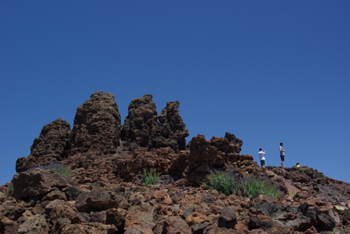
And these are the "boys" themselves.
Labels: Caldera de Taburiente, Canaries, Canary islands, Garafía, La Palma, La Plama, Roque de los Muchachos
Bookmark with:
 Del.icio.us Del.icio.us
|
 Digg Digg
|
 Reddit Reddit
|
 Facebook Facebook
|
 Furl It Furl It
|
 Newsvine Newsvine
|
|



